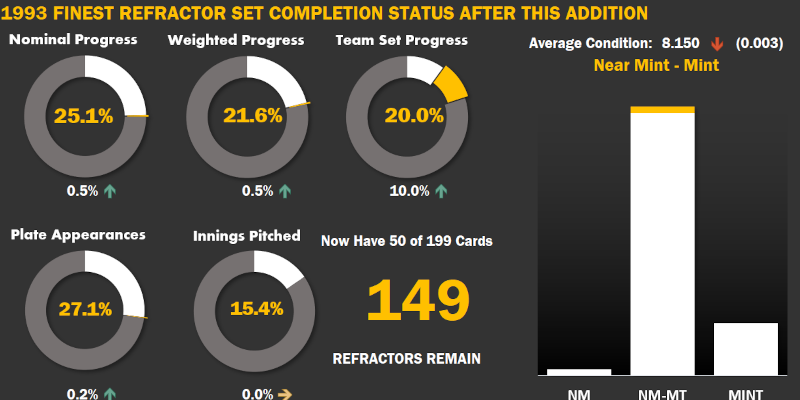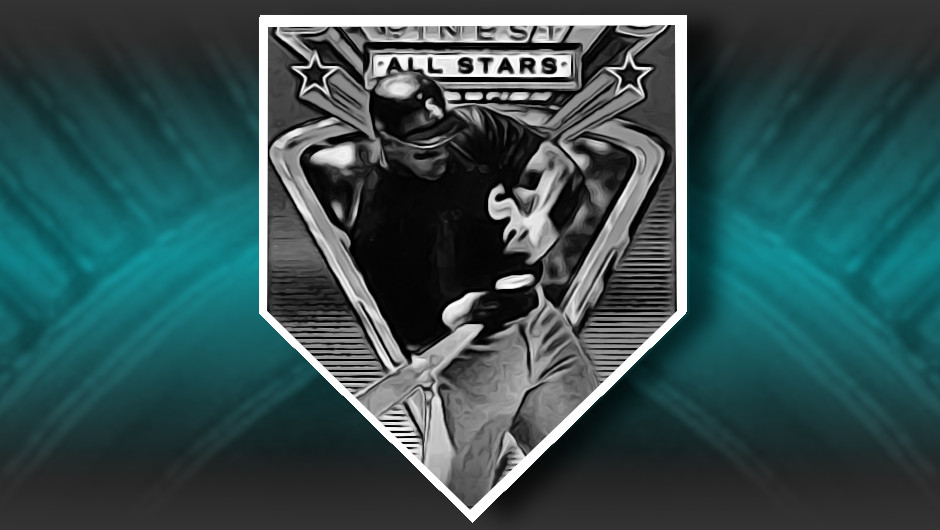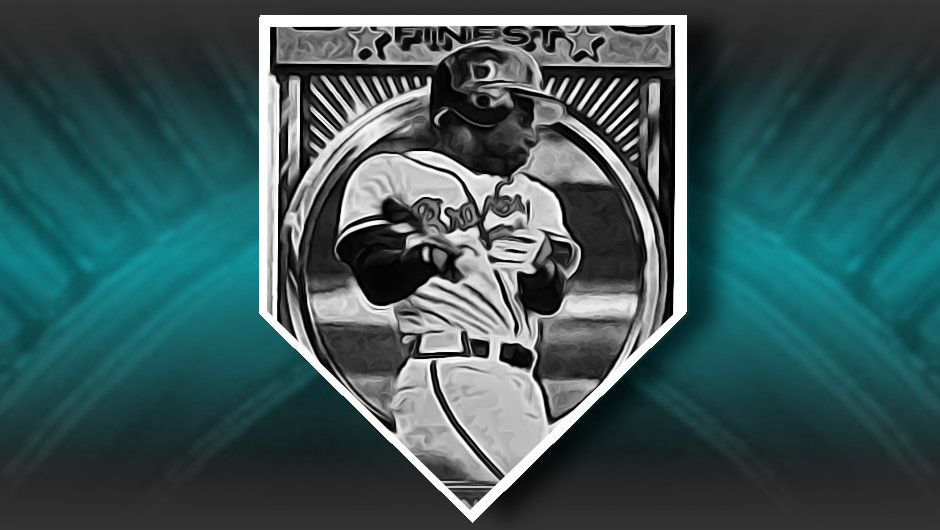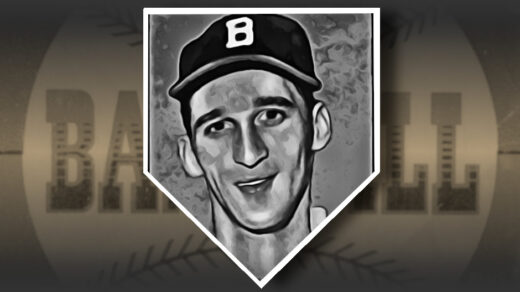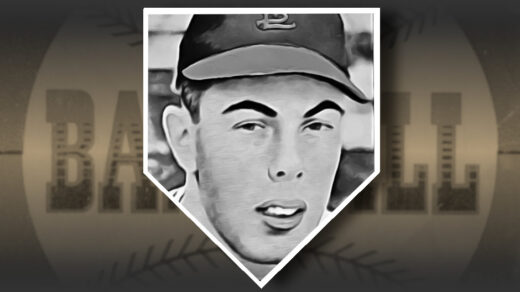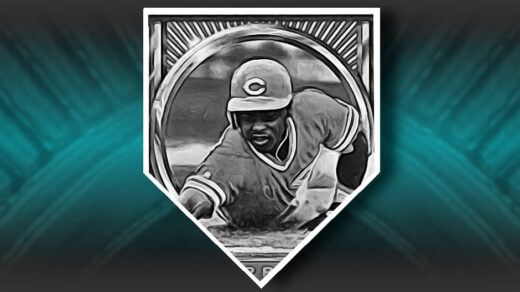The Goudey Gum Company produced some of the best baseball cards of the 1930s with its 1933 set considered the most iconic. The same year the company produced its landmark baseball issue, it produced another set marketed under the name “Sport Kings Gum.” It was filled with some of the biggest names in baseball, including Babe Ruth, Carl Hubbell, and the recently retired Ty Cobb. The checklist was also comprised of well-known names from football, basketball, hockey, boxing, horse racing, and golf.
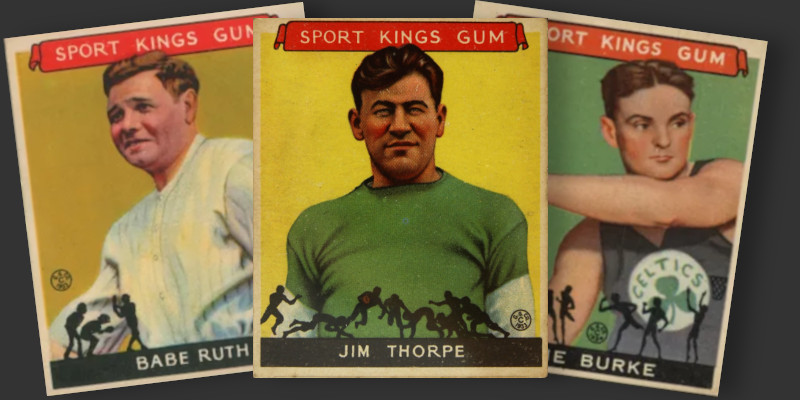
This leads me to a question: To what extent do the non-baseball players interest collectors of baseball cards? Many collectors would probably be satisfied with the athletes depicted as baseball players and leave it at that. Babe Ruth (pictured on the left in the above trio of cards) is clearly part of this group. Eddie Burke of the Boston Celtics is clearly not a baseball player and would not be a card targeted within my segment of collecting. Where it gets tricky is accounting for players who played professionally in baseball as well as the sport they are more widely known for. Jim Thorpe is shown in the Sport Kings set as a football player, but also was a famed Olympic track athlete and a former New York Giants outfielder for parts of six seasons.
Taking the question just a bit further, what about cards depicting an athlete from another sport playing baseball? Several years before he seriously attempted a baseball career, Chicago Bulls star Michael Jordan was depicted on an Upper Deck card taking batting practice with the Chicago White Sox. The card was issued in packs of 1991 Upper Deck baseball cards, but it seemed to largely be basketball fans chasing it at the time of its release. Jordan’s minor league experience a few years later lent credibility to the idea that this was truly a baseball card, but it took a bit of time and his switching sports to place the card firmly in the baseball camp.
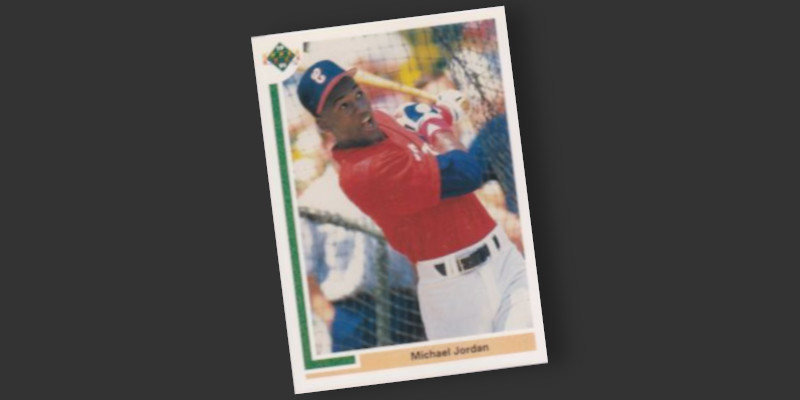
So here’s where it gets interesting. Multisport players have existed for quite a while. The 1952 Topps set has several professional basketball players in it who went on to make a bigger impact in baseball. Danny Ainge played a few seasons with the Toronto Blue Jays before moving in the other direction to the basketball court. Vic Janowicz played in both the NFL and MLB in the mid-1950s. A few decades after Janowicz, Topps issued these dual rookie cards in its 1989 sports card sets:
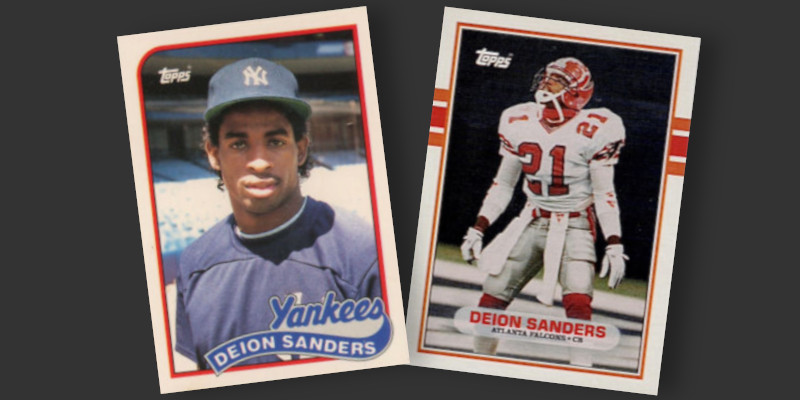
That year Deion Sanders made his NFL and MLB debuts. He had been drafted by the Yankees in 1988, a team that had been the first to pursue Bo Jackson when they selected him in the second round of the ’82 draft. Jackson ultimately came up through the Kansas City Royals organization after being drafted in 1986, but not before the Royals made an offer to Sanders in 1985.
Sanders’ early baseball results were not terribly impressive. He started the majority of his games in the leadoff spot, but generally had trouble getting on base at any kind of accelerated rate. Once on base, however, he could fly. He averaged nearly 50 SBs per 162 games and could have added to that prolific pace if he developed a better batting eye.
Quickly dubbing himself “Prime Time,” Sanders embarked on a promotional spree that made Rickey Henderson look humble. This did not sit well with much of the baseball community, as Rickey had at least already proved his ability while the brash Sanders struggled to hit .200. Fans of the era can easily recall Sanders being yelled at by Carlton Fisk when Prime Time began a series of at-bats by drawing dollar signs in the dirt near home plate.
Things improved as Sanders’ career progressed. In 1992 he had only 92 hits, but 14 were triples, earning him the National League lead for the category while carrying his sub-.200 batting average to .304 for the season. That year also saw Sanders post 3.3 wins above replacement, a total higher than any single season WAR tally put together by the universally loved Bo Jackson. Maybe Sanders was on to something.
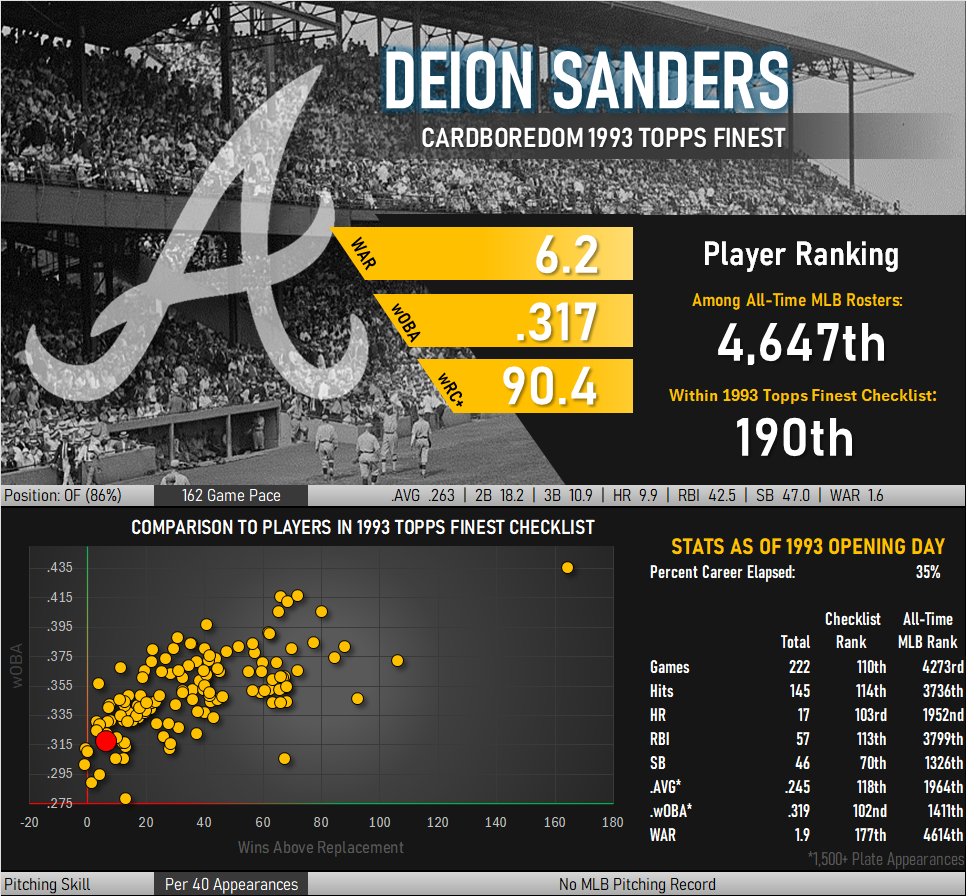
In the end there are a large number of players with similar overall contributions to their teams. What makes Sanders so noteworthy is his football career, which overlapped with baseball for 9 seasons. It wasn’t just that he was playing two sports, it was that he did so while redefining what was possible at cornerback. By the time it all wound down, he was undisputedly the best to ever play the position. Not only that, he went head to head against other names who are thrown around as “the best ever” and usually came away as the winner in these matchups. Generations of future NFL players adopted style elements that marked his play, from touchdown celebrations to even dressing like him in high socks and hanging towels from their belts. Some have argued that he is the best NFL player ever. If he is not, he is at least in the conversation and may very well be the most influential to have played the game.
Prime Time Refractor
The addition of a Deion Sanders card takes my in-progress set to 25% complete. The photo on the front suffers a bit from the “disappearing bat” effect produced by the multi-layered printing process and the timing of the picture. Depth isn’t something these cards do very well, and it makes it look like Deion is swinging without a bat at first glance.
I think Sanders’ record shows he was a decent baseball player. Given the way he showed improvement over time, he probably would have been even better at the sport had he dedicated 100% of his attention to it. Given that he made the correct decision to stick with football, there will always be a good deal of interest in this card from football collectors. However, his accomplishments on the diamond show that not only is this a legit baseball card, it is one featuring a player who belonged in the ’93 Finest checklist.

